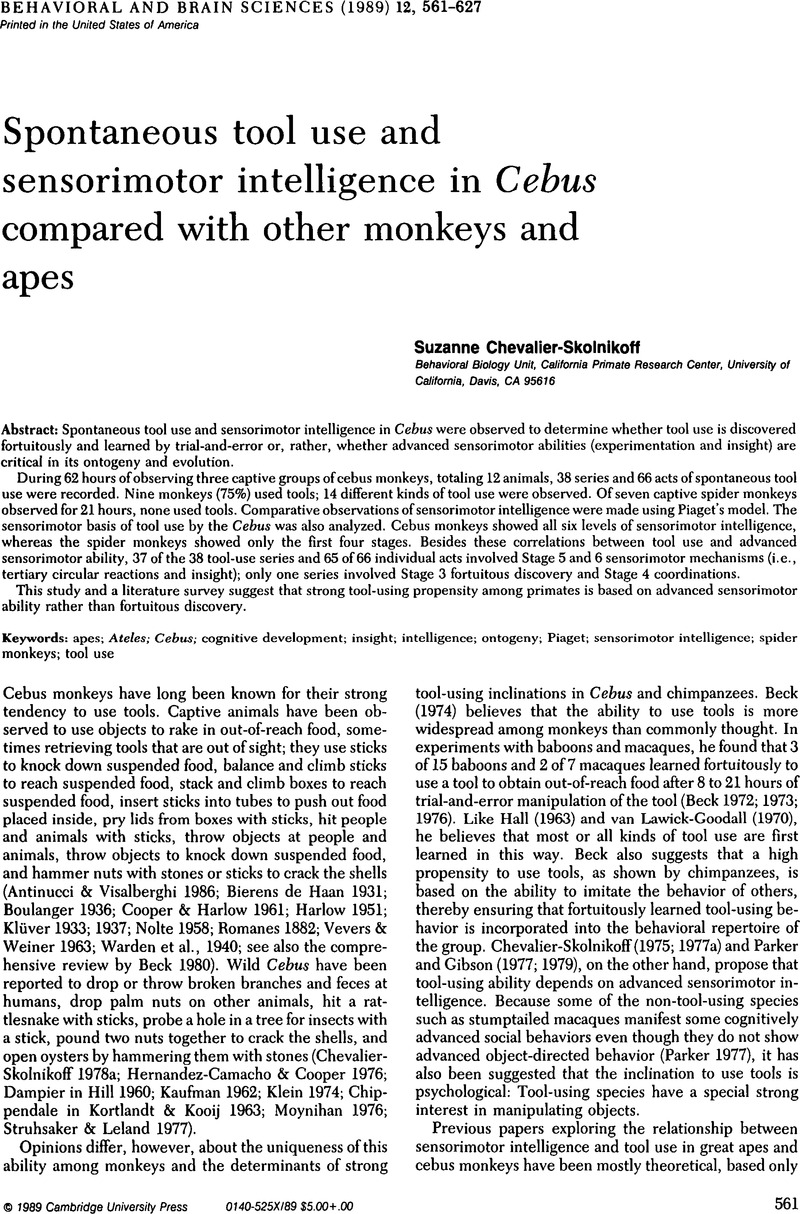Crossref Citations
This article has been cited by the following publications. This list is generated based on data provided by Crossref.
Boinski, Sue
Quatrone, Robert P.
and
Swartz, Hilary
2000.
Substrate and Tool Use by Brown Capuchins in Suriname: Ecological Contexts and Cognitive Bases.
American Anthropologist,
Vol. 102,
Issue. 4,
p.
741.
Boinski, Sue
Quatrone, Robert P.
Sughrue, Karen
Selvaggi, Lara
Henry, Malinda
Stickler, Claudia M.
and
Rosea, Lisa M.
2003.
The Biology of Traditions.
p.
365.



